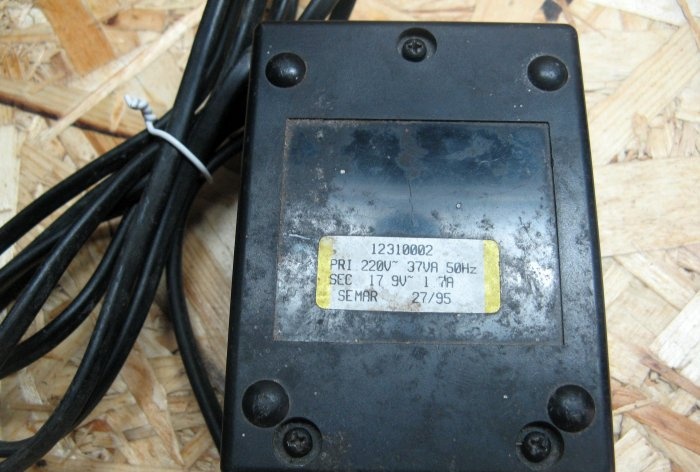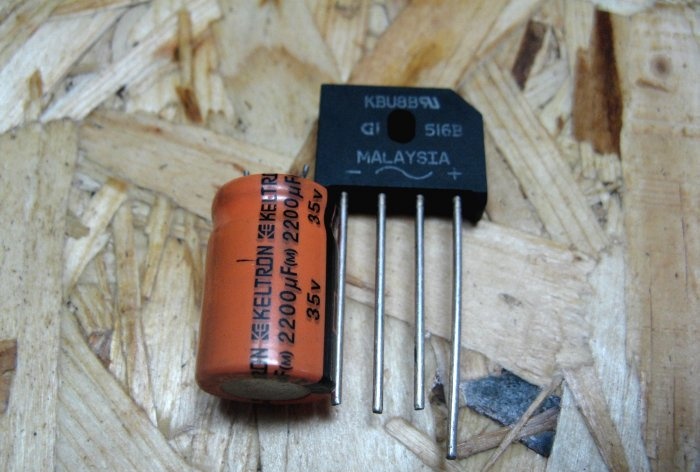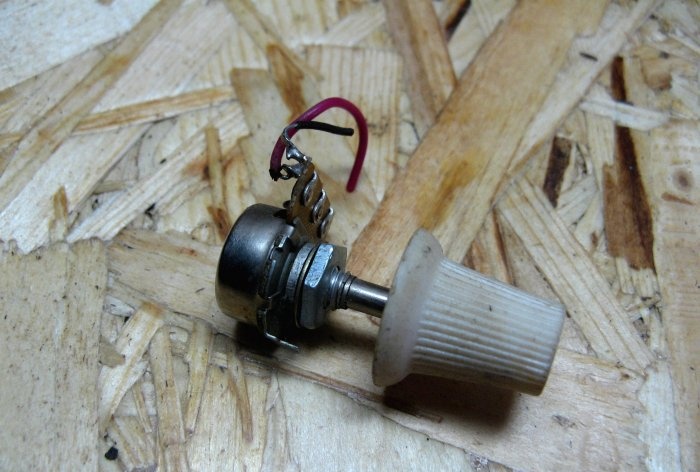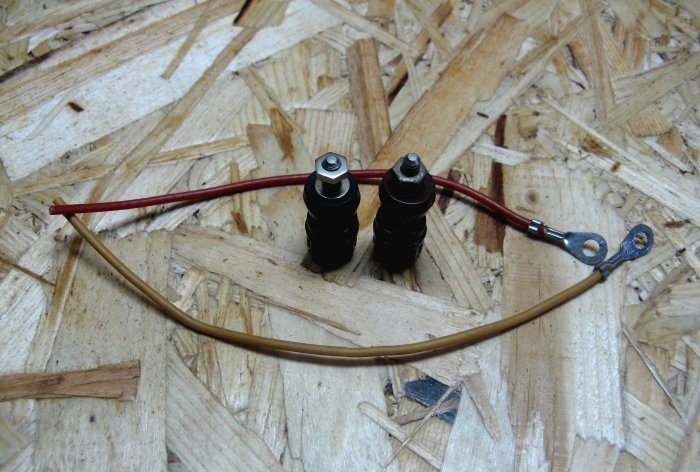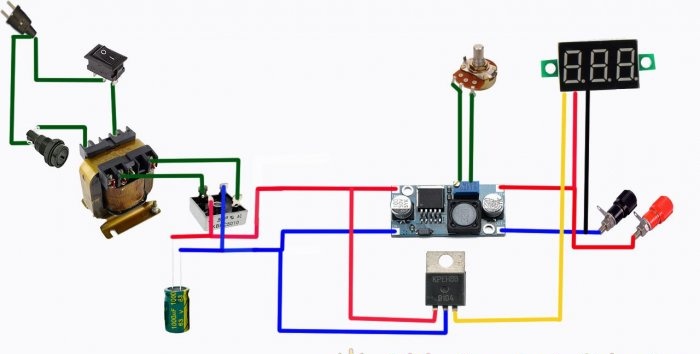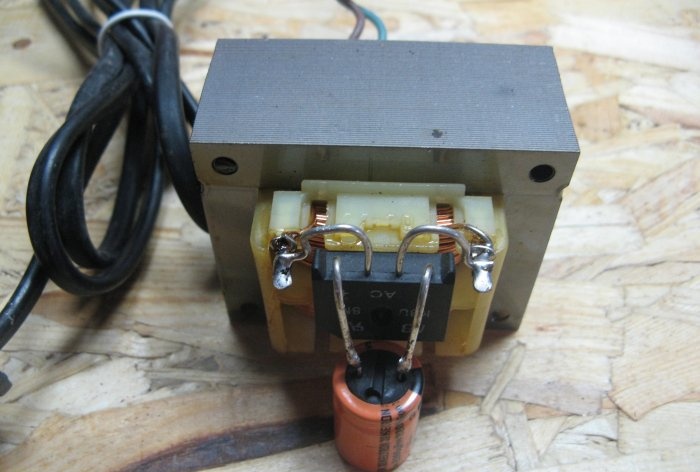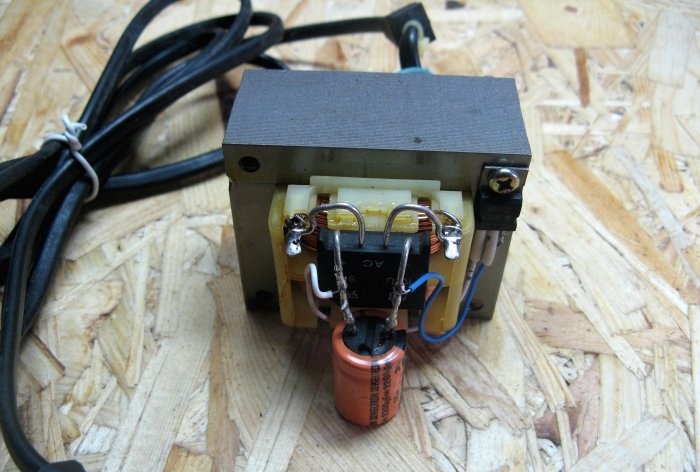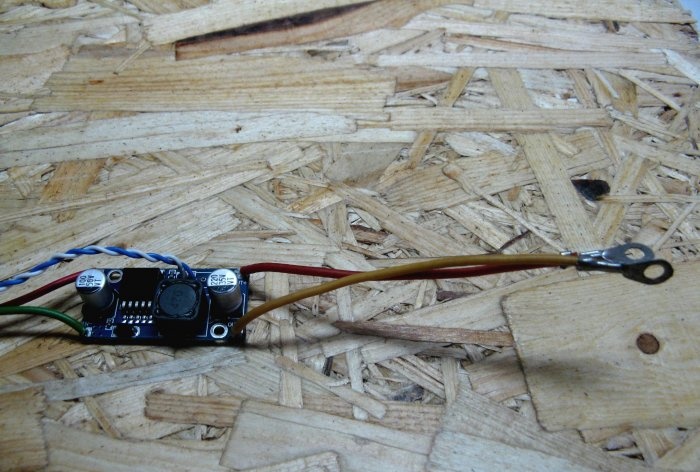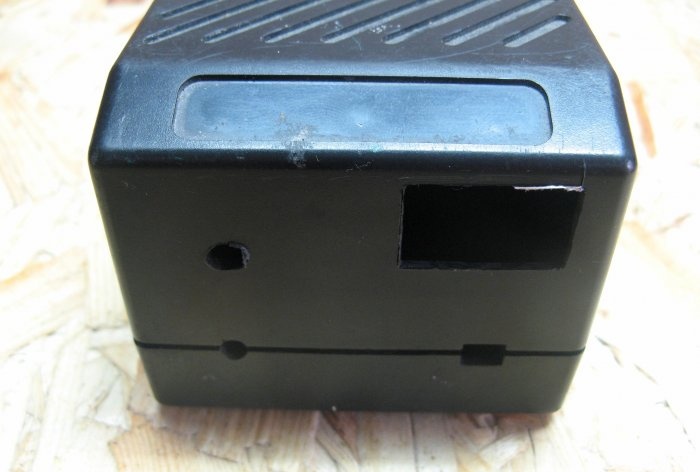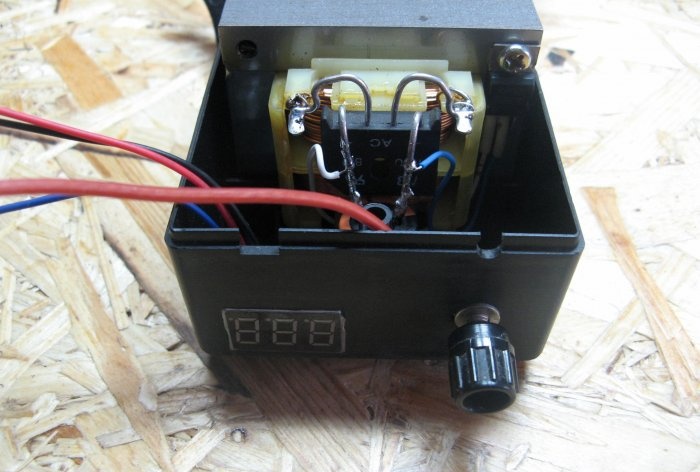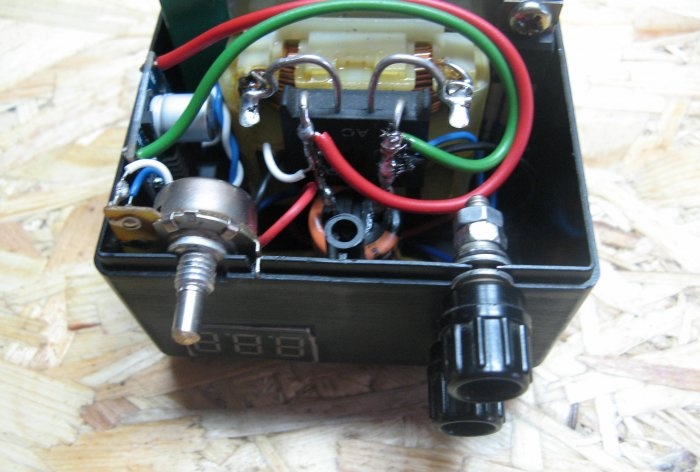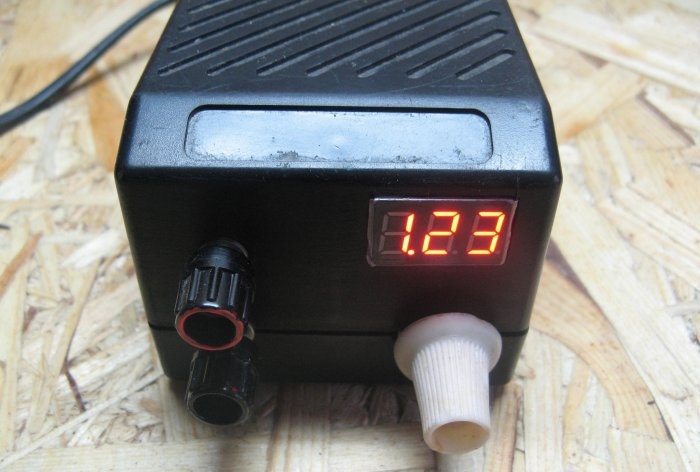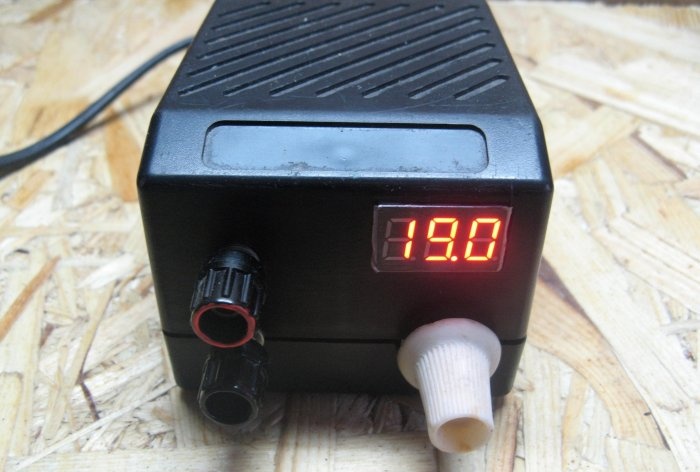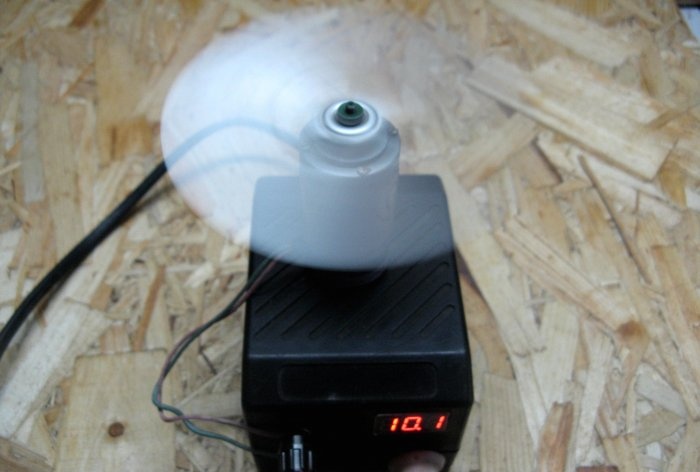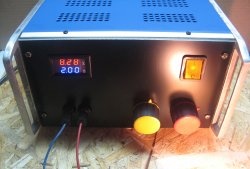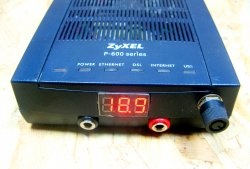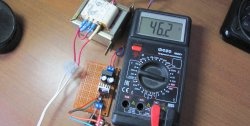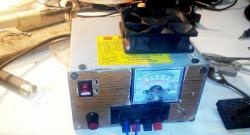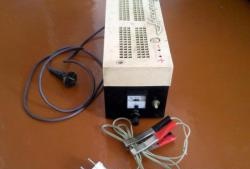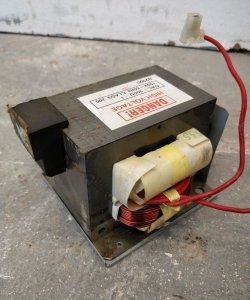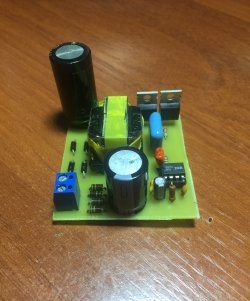When you assemble any electronic homemade product, you need a power supply to test it. There is a wide variety of ready-made solutions on the market. Beautifully designed, have many functions. There are also many kits for DIY production. I'm not even talking about the Chinese with their trading platforms. I bought step-down converter module boards on Aliexpress, so I decided to make them on it. The voltage is regulated, there is enough current. The unit is based on a module from China, as well as radio components that were in my workshop (they had been lying around for a long time and were waiting in the wings). The unit regulates from 1.5 volts to the maximum (it all depends on the rectifier used to the adjustment board.
Description of components
I have a 17.9 Volt transformer with a current of 1.7 Ampere. It is installed in the housing, which means there is no need to select the latter. The winding is quite thick, I think it will handle 2 Amps. Instead of a transformer, you can use a switching power supply for a laptop, but then you also need a housing for the remaining components.
The AC rectifier will be a diode bridge; it can also be assembled from four diodes.An electrolytic capacitor will smooth out the ripples; I have 2200 microfarads and an operating voltage of 35 volts. I used it used, it was in stock.
I will adjust the output voltage Chinese module. There are a wide variety of them on the market. It provides good stabilization and is quite reliable.
To conveniently adjust the output voltage, I will use a 4.7 kOhm adjustment resistor. The board has 10 kOhm installed, but I’ll install whatever I had. The resistor is from the early 90s. With this rating, adjustment is ensured smoothly. I also picked up a handle for it, also from a shaggy age.
The output voltage indicator is voltmeter from China. It has three wires. Two wires power the voltmeter (red and black), and the third (blue) is measuring. You can combine red and blue together. Then the voltmeter will be powered from the output voltage of the unit, that is, the indication will light up from 4 volts. Agree, it’s not convenient, so I’ll feed it separately, more on that later.
To power the voltmeter, I will use a domestic 12-volt voltage stabilizer chip. This will ensure that the voltmeter indicator operates at a minimum. The voltmeter is powered through the red plus and black minus. The measurement is carried out through the black minus and blue plus output of the block.
My terminals are domestic. They have holes for banana plugs and holes for clamping wires. Similar can be bought in China. I also selected wires with lugs.
Power supply assembly
Everything is assembled according to a simple sketched diagram.
The diode bridge must be soldered to the transformer. I bent it for comfortable installation. A capacitor was soldered to the output of the bridge. It turned out not to go beyond the height dimensions.
I screwed the power supply arm of the voltmeter to the transformer.In principle, it does not heat up, and so it stands in its place and does not bother anyone.
I removed a resistor on the regulator board and soldered two wires under the remote resistor. I also soldered wires under the output terminals.
Mark holes on the case for everything that will be on the front panel. I cut holes for a voltmeter and one terminal. I install the resistor and the second terminal at the junction of the box. When assembling the box, everything will be fixed by compressing both halves.
The terminal and voltmeter are installed.
This is how it turned out to install the second terminal and the adjusting resistor. I made a cutout for the resistor key.
Cut out a window for the switch. We assemble the housing and close it. All that remains is to wire the switch and the regulated power supply is ready for use.
Block test
The power supply regulates the voltage from 1.23 Volts.
Maximum voltage 19 Volts.
The voltmeter displays quite accurately. I don’t consider 20-30 millivolts such a strong deviation.
Connected the motor. The tension does not subside.
This power supply is simple and does not display load current. This may be a minus, but this case would not accommodate an ammeter and there is no provision for current regulation. So I completed the task.
This is how the regulated power supply turned out. This design is simple and can be repeated by anyone. The parts are not rare.
Good luck with making everyone!

